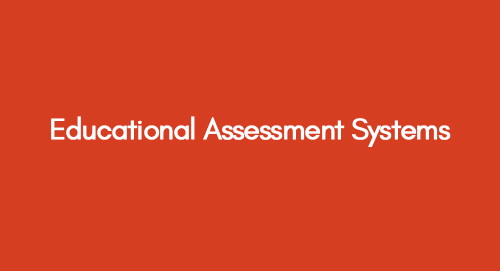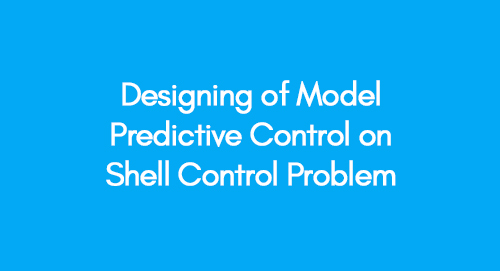
Decision Support Systems; an Overview
February 27, 2021
Capital Asset Pricing Model
February 27, 2021The traditional activities related to civil engineering utilizes a broad range of schemes, tools and software which provides support in various aspects of a project, such as in the management of human resources, process optimizations, selection and/or production of materials, prefabrication and performance measurement techniques etc. These schemes/tools are considered to have significant impact on any project.
In the last many decades, a considerable amount of research and development has been completed to improve the construction methodologies, which has in fact revolutionized this industry. These recent development have not only provided numerous opportunities and challenges to the architects, designers and engineers of this century, but it has also imposed significant pressure to ensure effective space utilization, conservation of energy, sustainability adaption and material selection etc. Therefore, much more emphases are given to consideration of prudent use of resources, efficient designing / planning techniques and recyclable/renewable material use (Pacheco, 2007).
Interoperability, which can be defined as the ability to present, communicate and manage electronic data, is considered to hold key importance in the civil engineering industry. The successful application of interoperability requires that a variety of procedures, schemes and information technology tools are used to create multi dimensional and visualisable plans. There are various methods/software/tools used to achieve this objective, such as Computer Aided Design and Drafting (CADD), TEDDs, MATLAB, ANSYS, SolidWorks, BuildingSMART, VectorWorks etc, which are now often being used to develop engineering drawings, and to perform process simulations and calculations.
With the introduction of such systems, various tools have been integrated to develop models which can provide support in almost every aspect of a project, such as to support estimations of cost, material tracking, scheduling of activities and laser scanning. These tools not only provide management support to the users, but also allows to communicate/present and share valuable information with clients and as well as with contractors, vendors and suppliers. These further ensure the ability to streamline engineering designs starting from the initial planning stage, overall project management, and in financial requirements of the project.
Other methods such as Scheduler, Prima Vera, SAP, MS Project and Primavera, and schemes such as the Critical Path Method (CPM), Total Quality Control (TQC) and Just in Time (JIT) approach etc can also be used during the planning and construction stages of a project. However, since the last few years, Building Information Modeling (BIM) has gained much attention from the stakeholders of the construction industry and as well from the policy drivers at the governmental level. The BIM is engineered to produce and manage/organize productive data during project’s complete life cycle (Lee et al. 2006). There is an extensive range of parameters which this program can be used for, such geographical and spatial analyses, material properties, quantities, details of processing, drawing, scheduling etc, which makes it extremely effective in almost all phases of the project management, as shown in the figure below;
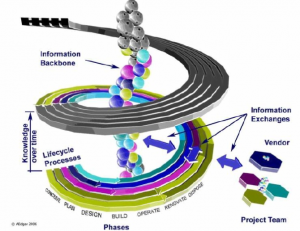
Figure 1: Building Information Modeling Standard (Source: NIBS, 2006)
However, technological advancements with respect to BIM are not the only new entrant in the civil engineering industry. The Information System (IS), Virtual Construction 3-Dimensional Auto-CAD (VC-3D-CAD), Computer Information Construction (CIC), and Information Technology (IT), are some of the technical advancements being employed in this industry with contributions towards the development of interactive and integrated space information processing. The use of BIM and how its practical application can benefit in various aspects are discussed in the part two of this paper.
Application of such tools and the kind of impact these can have on activities such supply-chain management, sequence of work flows and accuracy of the data is quite influential. Their application aims to eliminate the mismatch/conflicts between the design and engineering. It further enables the stake holders to attain real time data which is extremely useful while working on site.
Energy Assessment, Sustainable Construction and Other Standards
The energy conservation consideration is another critically important aspect in today’s work ethics and development strategies. According the to the climate change act of United Kingdom, 2008, the architectural industry of is required reduce and maintain the amount of release of greenhouse gases to a certain level by the year 2050. The Energy Act of 2011 further requires the subject industry to reach a specific minimum value with respect to standard energy efficiency by April 2018, for all the residential or business premises. The figure below shows the required reduction rate of emissions;
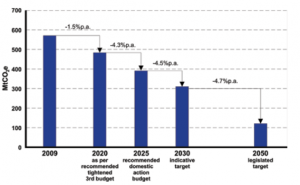
Figure 2: greenhouse gases emission reduction requirement; 2009 to 2050 (CCC, 2010)
Since the construction industry is required to reduce the greenhouse gas emission in the coming years, the stakeholders are now keen to develop and participate in methods/schemes which would allow them to meet this criterion (CCC, 2010); which effectively means adaptation to technology which ensures efficient utilization of resources. The Carbon Reduction Commitment Energy Efficiency Scheme, also known as CRC, is acting as a driving factor/force in order to implement these changes and ensure that a clear path is provided to companies in terms of provision of data, guidance, procedures, energy assessment methods/tools etc.
Various methods can be adopted to reduce the energy consumption. The Standard Assessment Procedure (SAP) is one method used by the UK’s government to assess/compare energy performance of dwellings. The latest version of SAP is available from department of Energy & Climate Change UK (Standard Assessment Procedure, 2014).
The “Retrofit” improvement method/scheme, passive cooling and heating optimization, use of natural renewable energy resources, air tightness of the building, external and internal insulation of the structure walls and use of energy star rating are some of various methods which can enhance the energy performance and provide support in catching up with the legislations and standards. One example which can be quoted here is the application of the Combined Heat and Power (CHP) systems, which is designed to enhance the efficiency of electricity production and distributions. The system uses locally available energy resources, including biomass and waste, and it is designed to utilize most of the unused energy to provide hot water (Kelly and Pollitt, 2010).
The site waste management plans/legislation (SWMPs) have also been implemented by the agencies of environmental protection in UK, to enforce waste management procedures for all the major projects. Other standards for the onsite construction have also been developed by the government, example of which can be given BS 8102:2009, which characterize in the grades of basement constructions, with consideration clearly stated for the environmental aspects and the provision of the ventilation system (BS 8102, 2009). These are code of practices which must be followed in accordance with such legislations and procedures
Therefore, an accumulative sustainability impact can be generated via efficient selection and usage of materials, reduction in waste, and enhanced performance of equipments. This can be successfully achieved by following the standards and legislations, and by using the available technologies in-terms of tools and software (s). Therefore it is important to ‘gain information on the deliverables of such numerously available applications’ and also to ‘learn how to use them’.
Part Two
Introduction to BIM; Advantages, Application & Packages
The BIM technology, as introduced in the previous section, has now been implemented in UK, and it is widely used in both public and private sector organizations. According to the Department for Business Innovation & Skills (BIS), 2014, the government has set out a strategy to achieve the following objectives by 2016;
- Achieve high operational efficiency and reduction in costs
- Ensue supply chains affectivity in all construction processes
- Adopt an approach based on future prospects with respect to industrial growth
Research conducted by Azhar, et.al. 2008, suggested the following are some of the most vital benefits of BIM application;
- Project Visualization; The BIM- 3D is one of the package that can be used to render the project details in visualisable form. This tool provides presentable of models, 3D drawings, site layout plan, construction plant to clients, investors, vendors, contractors etc.
- Drawings/Models developments; Generation of shop-drawings can effectively be generated through BIM.
- Hazard Analyses; BIM can be successfully used to analyze any hazard related to possible failures through application of hazard analyses tool of BIM.
- Coding; various bodies including the government, safety and rescue service providers can benefit from BIM generated drawing-codes.
- Management of Facilities and Engineering; Renovations, developments, maintenance, planning and all form of operations can be performed through BIM application.
- Estimation of costs; BIM includes features which can produce estimated quantitative real time cost analyses
- Sequencing; The creation of construction schedules or activity planning which provides support in the activities such as management of material ordering, delivery scheduling, timely fabrication of required construction materials, and successful start and completion of all projects as per the planned times
- Interference/conflicts detection; any interferences and/or clashes can be inspected and visualized to eliminate/reduce and conflicts during the life cycle of the project.
The packages designed and integrated to work in line with the frame-work of BIM include Autodesk Revit, ArchiCAD and Saneo, which are some of the BIM model/service providers. Various other derived standards, for example BuildingSMART, COBie and IFC are now in the process of being implemented at the industrial level through collaboration with the British Standards Institute and International Standards Organization (ISO), which is expected enhance the performance of structured protocols in Britain (HM Government, 2012).
BIM Performance Assessment & Application; Case Study
A typical case of construction of a multi storey building can be reviewed to analyze the impact the BIM can generate during the complete life cycle of the project. Starting from the planning stage, the following are the major activities which will be required to complete the structure of the building;
Table 1; Project Activities
|
Project’s Major Activities |
|
|
Listing the client’s requirements, completing technical paper works, calculations and drawings, site layout planning, building layout approvals |
|
|
Approval of the prepared drawings, proposals, layouts etc by client and/or other stakeholders
|
|
|
Preparing of bill of quantities arrange tender approval, establish procurement team and complete preparation of primary site, required machinery import and workshops development
|
|
|
Initiating the excavation process for basement and foundations for proposed buildings. Completion of foundations and basement construction works
|
|
|
Import structural materials and initiate assembling
|
|
|
Complete structural construction and/or installation of structure of buildings including the all other engineering works |
|
|
Finish structural-works and engineering works, undertake testing, complete flooring, roofing and walling |
In order to successfully complete all the activities briefly detailed in the table1, it is vital to determine the best possible method to be adopted for the completion of each activity. The following highlights how the use of BIM for most of the construction activities would enhance the proposed design and other activities with respect to its applications.
Design of the multistory building: Along with the development of a 2-D model for the proposed building, a 3D model will also be generated through the use of BIM, which will help the stakeholders to visualize the proposed buildings dimensions and outlook, as shown in the figure below;
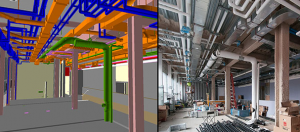
Figure 3: BIM Design and Implementation (source: Facilities, Princeton University 2014)
Real time data can be incorporated in the design at any stage to revise and aspect or parameter of the project (Design Synchronization). Simulations will also be performed using the BIM. As pointed out by McGraw Hill construction, 2009, application of BIM will allow prompt settlement of any issues during the design stage, including any required updates in the design. It will further allow optimized cooperation between the workers at an early stage. Architectural sustainability will also be engineered in the design and construction of this complex through the use of energy modeling tool. This will analyze energy utilization and enhance the energy efficiency.
Activities Completions: Through the design data’s precise integration with fabrication, and real time data updates, activity scheduling (which can also be completed through Gantt chart or MS Project tool), and precise prefabrication as required in the construction stage will be completed through BIM for in this project; as shown in the figure below;
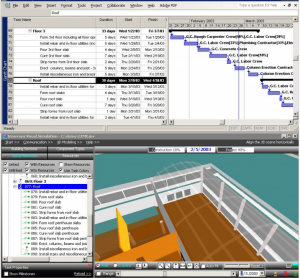
Figure 4: BIM planning and constructability analyses (source: REVIT BIM, 2007)
As shown in the figure above, the BIM’s model application will be obtained/purchased from any of the BIM service providers (such as Revit, ArchiCAD, Innovaya, Saneo etc) and it will integrated with MS Project or Primavera. Automated creation of activity and construction updates will enable the workers on site to establish clear day to day goals. Furthermore, with recently updated dimension of time (4D), cost (5D), and life cycle of the project (6D) in the latest BIM, all the construction processes given in the table 1 for this project are expected to be completed with much less occurrence of errors, better management, high precision, in-time and better engineered.
References
- Azhar, S., Hein, M., And Sketo, B., (2008). “Building Information Modeling: Benefits, Risks And Challenges”, Proceedings Of The 44th Asc National Conference
- BIM, (2011). A report for the Government Construction Client Group Building Information Modelling (BIM) Working Party, Strategy Paper. Available online at: http://www.bimtaskgroup.org/wp-content/uploads/2012/03/BIS-BIM-strategy-Report.pdf [Retrieved on 31 March 2014]
- BuildingSMART, (2014). International Alliance for Interoperability. Available online at: www.buildingsmart.com [Retrieved on 30 March 2014].
- BS 8102: 2009. Code of practice for protection of below ground structures against water from the ground. Available online at: http://shop.bsigroup.com/ProductDetail/?pid=000000000030168198. [Retrieved 01 April 2013]
- CCC, (2010). The Fourth Carbon Budget: Reducing emissions through the 2020s. The Committee on Climate Change, London
- Department for Business Innovation & Skills, (2014). Available online at: <https://www.gov.uk/government/organisations/department-for-business-innovation-skills> [Retrieved on 31 March 2014]
- Facilities, Princeton University, (2014). How Building Information Modeling (BIM) Improves the Design and Construction Process. Available online at: http://www.princeton.edu/facilities/info/news/archive/?id=8217 [Retrieved on 01 April 2014].
- Government Construction Strategy, 2011. A One Year on Report an Action Plan Update. Cabinet Office, Government Construction Strategy. Cabinet Office, 2011
- HM Government, (2012). Industrial strategy: government and industry in partnership, Building Information Modelling. Document is also available from: www.bis.gov.uk, URN 12/1327 [Retrieved on 01 April 2014].
- Kelly, S and Pollitt, M., (2010). An assessment of the present and future opportunities for combined heat and power with district heating (CHP-DH) in the United Kingdom. Available online at ScienceDirect.
- Lee, G., Sacks R., and Eastman, C. M. (2006). Specifying parametric building object behaviour (BOB) for a building information modelling system.
- McGraw Hill. (2009). The business value of BIM: getting to the bottom line. Retrieved from: http://www.bim.construction.com/research
- NIBS (2006). Update on the National Building Information Modelling Standard. Proceeding on The 3rd National Congress on Digital Collaboration in the Building Industry.
- Pacheco, F. (2007). Eco-Efficient Construction & Building Materials., University of Minho, Springer London
- REVIT BIM, (2007). BIM and Project Planning, Autodesk. Available online from: http://www.consortech.com/bim2/documents/BIM_project_planning_EN.pdf [Retrieved on 01 April 2014]
- Standard Assessment Procedure, (2014). Department of Energy & Climate, Change Guidance on how buildings will be SAP energy assessed under the Green Deal and on recent changes to incentivize low carbon developments. Available online from: https://www.gov.uk/standard-assessment-procedure [Retrieved on 01 April 2014].
- Zuppa, D., Raja, R., Issa, A., and Suermann, P.C. (2009). BIM’s impact on the success measures of construction projects, Computing in Civil Engineering
Get 3+ Free Dissertation Topics within 24 hours?
Schemes – Tools – Software- BIM

























